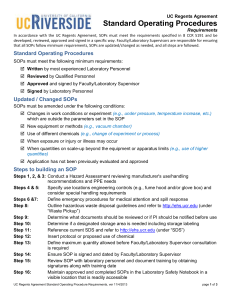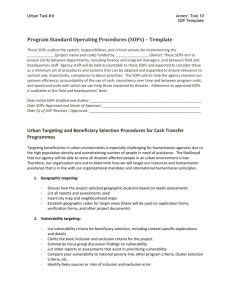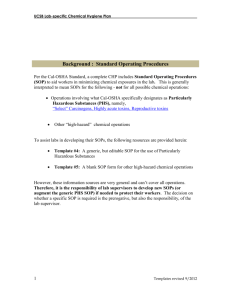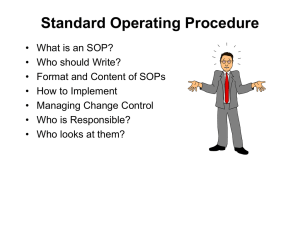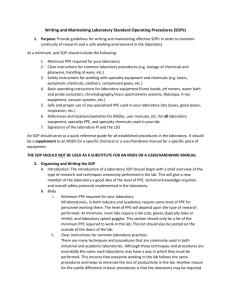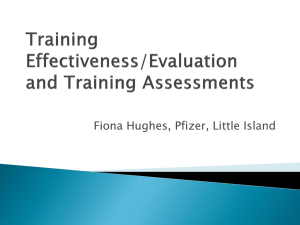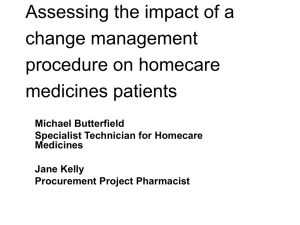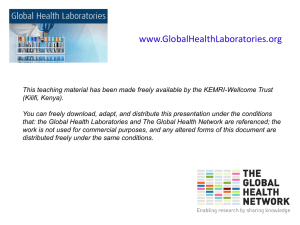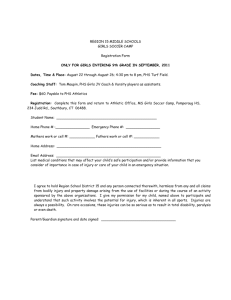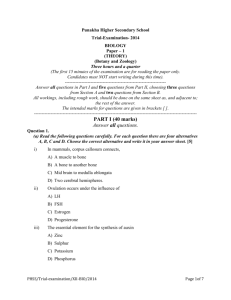SOPs for Particularly Hazardous Substances
advertisement
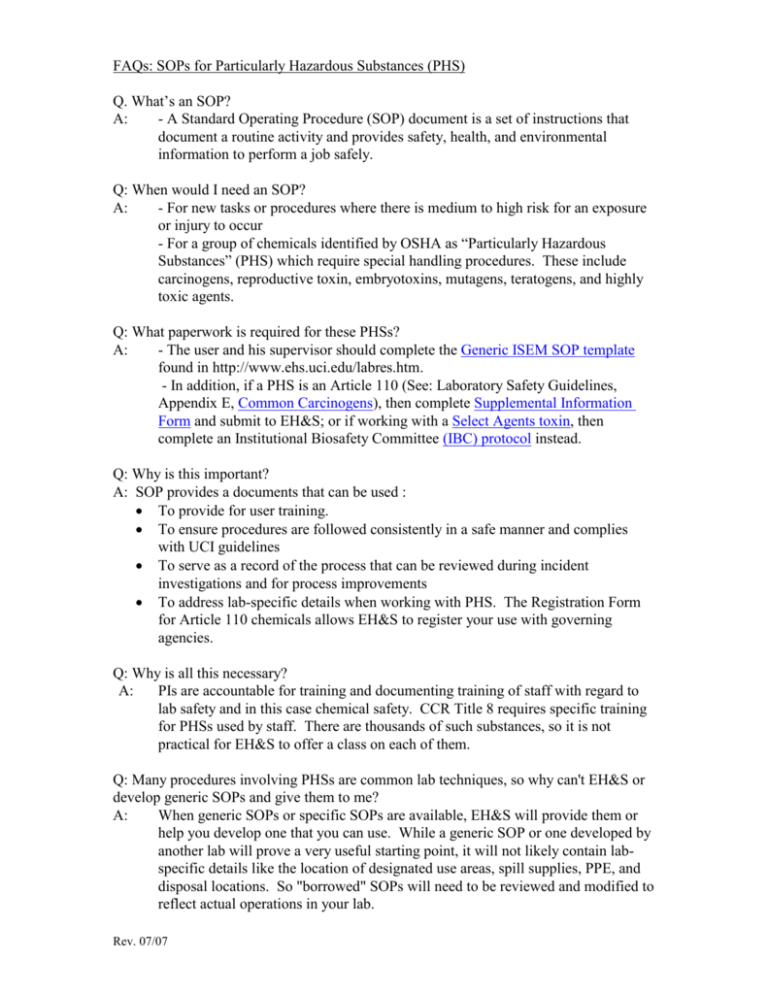
FAQs: SOPs for Particularly Hazardous Substances (PHS) Q. What’s an SOP? A: - A Standard Operating Procedure (SOP) document is a set of instructions that document a routine activity and provides safety, health, and environmental information to perform a job safely. Q: When would I need an SOP? A: - For new tasks or procedures where there is medium to high risk for an exposure or injury to occur - For a group of chemicals identified by OSHA as “Particularly Hazardous Substances” (PHS) which require special handling procedures. These include carcinogens, reproductive toxin, embryotoxins, mutagens, teratogens, and highly toxic agents. Q: What paperwork is required for these PHSs? A: - The user and his supervisor should complete the Generic ISEM SOP template found in http://www.ehs.uci.edu/labres.htm. - In addition, if a PHS is an Article 110 (See: Laboratory Safety Guidelines, Appendix E, Common Carcinogens), then complete Supplemental Information Form and submit to EH&S; or if working with a Select Agents toxin, then complete an Institutional Biosafety Committee (IBC) protocol instead. Q: Why is this important? A: SOP provides a documents that can be used : To provide for user training. To ensure procedures are followed consistently in a safe manner and complies with UCI guidelines To serve as a record of the process that can be reviewed during incident investigations and for process improvements To address lab-specific details when working with PHS. The Registration Form for Article 110 chemicals allows EH&S to register your use with governing agencies. Q: Why is all this necessary? A: PIs are accountable for training and documenting training of staff with regard to lab safety and in this case chemical safety. CCR Title 8 requires specific training for PHSs used by staff. There are thousands of such substances, so it is not practical for EH&S to offer a class on each of them. Q: Many procedures involving PHSs are common lab techniques, so why can't EH&S or develop generic SOPs and give them to me? A: When generic SOPs or specific SOPs are available, EH&S will provide them or help you develop one that you can use. While a generic SOP or one developed by another lab will prove a very useful starting point, it will not likely contain labspecific details like the location of designated use areas, spill supplies, PPE, and disposal locations. So "borrowed" SOPs will need to be reviewed and modified to reflect actual operations in your lab. Rev. 07/07 Q: Why do these SOPs have to be lab-specific? A: Whereas the CHP provides SOPs for working with hazardous chemicals, the higher hazard level associated with PHSs warrants training staff on safely handling PHSs as it is actually/specifically used by the lab. As in most areas, additional training leads to better practice. It is believed that training staff on labspecific safety details lowers the risk of harmful exposure when the benchmark for achieving safety is raised as it is when working with PHSs. Suggested Strategy for Getting SOPs in Place and Improving Them Over-Time 1. Size up the situation (some labs use none, others many) a. At next lab meeting, ask staff to review labels of chemicals they use now, looking for PHS keywords. Have them make a list of the PHSs they use. Here is a suggested format for the list. User Name PHS Name Type (C,R,HP, U)1 Article 1102 or Select Agent 3 (Y/N) Max % Conc. handled Typical working % Conc. Location used Waste Stored 1. Compile master list for lab. 2. Check the EH&S SOP Library for published SOPs related to your needs. 3. If no SOP is available, user can proceed to develop an SOP using the Generic ISEM SOP template. User can seek assistance from the EHS Coordinator. 4. During periodic lab meetings and lab audits, ask around whether new PHS use has begun (prompt users with PHS keywords to look for). If so, begin with Step 3 by asking EHS Coordinator if SOP exists. 5. Email your SOPs to the EH&S Chemical Hygiene Officer to add it to the Campus SOP Library. 1 (C) Carcinogen; (R) Reproductive Toxin; (HP) Highly Poisonous; (U) Unstable Reactive, Explosive, Pyrophoric, Water-reactive. 2 Article 110 carcinogens are a subset of carcinogens with special Cal-OSHA requirements. 3 Select Agents are biological agents restricted by United States Department of Human Health Services. Rev. 07/07 Protocol Name
